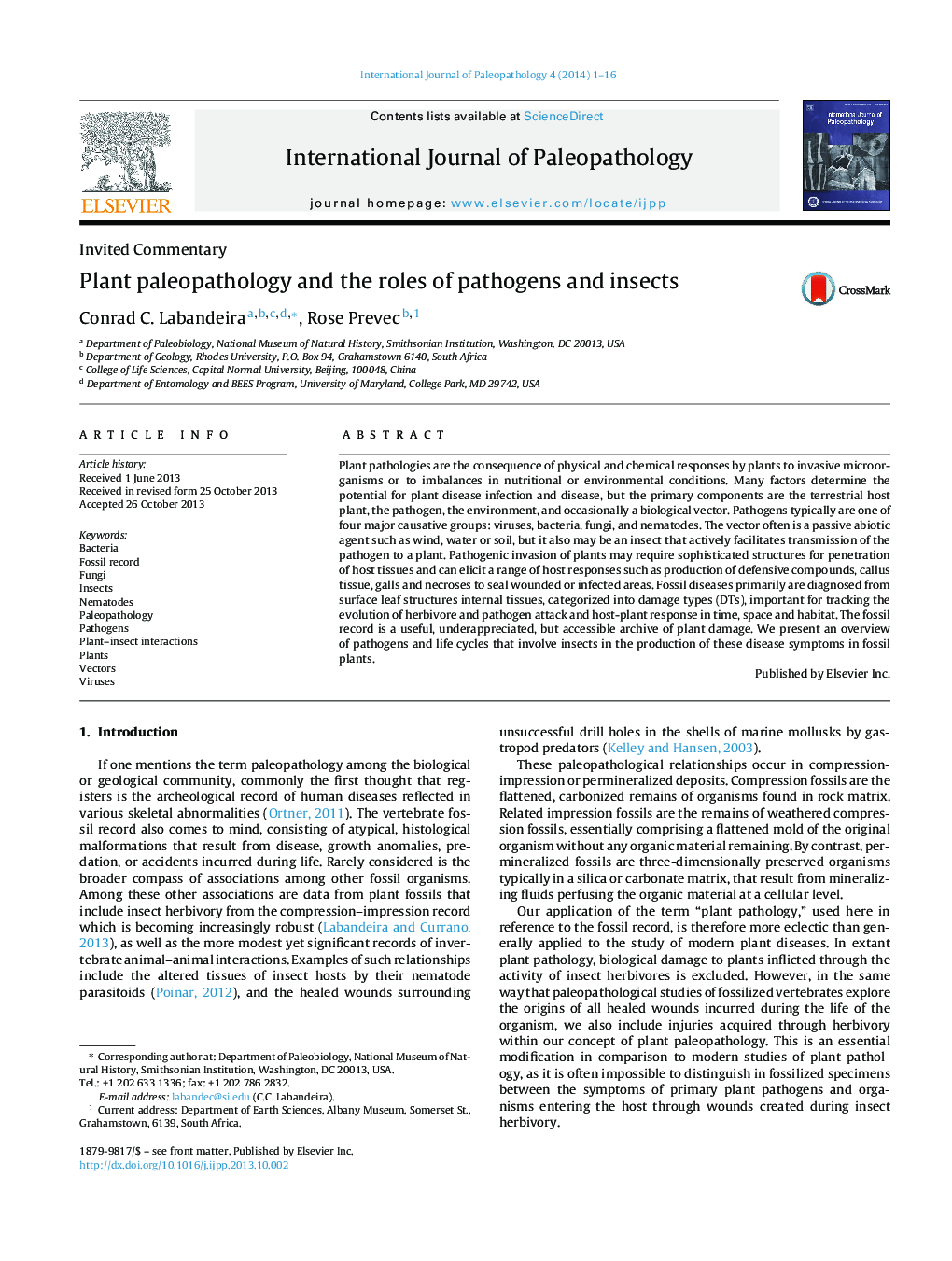| Article ID | Journal | Published Year | Pages | File Type |
|---|---|---|---|---|
| 101373 | International Journal of Paleopathology | 2014 | 16 Pages |
•State the importance of plant pathology and its role with fossil and modern entomology.•Provide a guide toward the recognition of plant pathogens in the fossil record.•Explore how the four major groups of pathogens modify tissues today and in the past.•Review what is known of pathogen biology in fossil compressions and permineralizations.•Discuss the current status of the field and offer suggestions for future research.
Plant pathologies are the consequence of physical and chemical responses by plants to invasive microorganisms or to imbalances in nutritional or environmental conditions. Many factors determine the potential for plant disease infection and disease, but the primary components are the terrestrial host plant, the pathogen, the environment, and occasionally a biological vector. Pathogens typically are one of four major causative groups: viruses, bacteria, fungi, and nematodes. The vector often is a passive abiotic agent such as wind, water or soil, but it also may be an insect that actively facilitates transmission of the pathogen to a plant. Pathogenic invasion of plants may require sophisticated structures for penetration of host tissues and can elicit a range of host responses such as production of defensive compounds, callus tissue, galls and necroses to seal wounded or infected areas. Fossil diseases primarily are diagnosed from surface leaf structures internal tissues, categorized into damage types (DTs), important for tracking the evolution of herbivore and pathogen attack and host-plant response in time, space and habitat. The fossil record is a useful, underappreciated, but accessible archive of plant damage. We present an overview of pathogens and life cycles that involve insects in the production of these disease symptoms in fossil plants.
